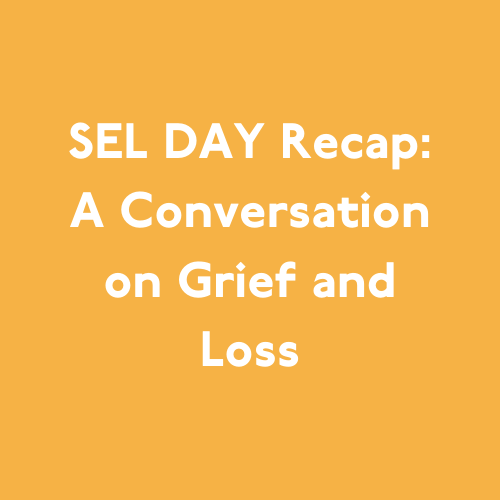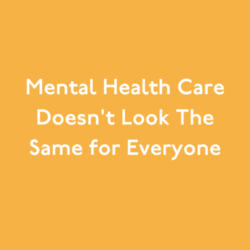During SEL Day 2021, we hosted a conversation on Clubhouse about supporting children through grief and loss, featuring our Founder & CEO Sara Potler LaHayne with grief specialist George Hagman and author of My Yellow Balloon Tiffany Papageorge. This year has been full of losses – from the death of loved ones to the loss of job security, experiences, and time, we are all experiencing the pain of loss. In this conversation, we learned that healing does not happen in isolation but in community. We wanted to share some of our takeaways with our community as we continue to support each other through the end of this school year.
-
1. Grief is common and natural
Grief is a normal reaction to an abnormal event. Contrary to the 5 stages of grief idea, we don’t just move through various stages until our grief is over. Grieving is more of a spiral, and feelings related to grief – like sadness, anger, or confusion – come up again and again in our lives, triggered by a multitude of events. Anyone who has experienced a significant loss knows that grief never ends, but we can learn to recognize when feelings of grief show up and how to move through them when they do.
-
2. We are currently in a state of global trauma
Grief and loss are not always related to death.
Grief can come from the loss of relationships, friendships, pets, and more. Times like these bring up a whole host of feelings around past losses and grief. For every one person who dies, an average of nine people are immediately, dramatically impacted by that loss. Considering the amount of lives lost during the COVID19 pandemic, there are millions of people grieving right now. Combined with the social, political, and economic unrest in America and we are experiencing layers of trauma as a society. What’s important to remember is that trauma and grief impact the brain. More importantly, to know is that one of the only types of learning that the brain can retain when experiencing grief or trauma is social emotional learning.
Have empathy for yourself and for those around you as we are all experiencing trauma, loss, and grief together.
-
3. To help our kids, we must offer ourselves healing
Parents need to process their own trauma too. It’s harder to express empathy or offer support to others when you are carrying your own overflowing emotional backpack. Allowing yourself to feel and process emotions is a part of living, and you can model that for your children to help them heal, too. Often, kids are ready to have conversations about grief and what they are feeling if their parents are, too.
-
4. Kids are resilient and adaptable
Kids are built to last, and their resilience and adaptability keep them moving forward through difficult feelings. For kids, key ways they communicate their grief is through behavior and play. Parents can meet kids where they’re comfortable to open up a healthy dialogue about grief. It’s important for adults to pay attention to kids’ behavior and engage them in meaningful play to understand how they’re feeling and help them process their grief in healthy ways.
Here are some strategies that can help you support children through grief:
- Take moments to move your body, physically releasing tension and noticing how emotions feel in your body. Kids may not be able to explain their sadness to you in words, but you can ask them to show you sadness with their bodies, or through a movement or sound to better understand how they are feeling.
- Talk about memories and focus your conversation on how those memories make you feel to find some healing in the understanding that we always carry our memories – and those we’ve lost – with us
- Use the word death explicitly instead of softer language like “passed away” or “no longer with us” or “in heaven.” Those concepts are harder for children to understand and can lead to confusion. Death is an emotionally traumatic event, and we can help each other heal by naming it clearly for children and supporting them through the emotions they’ll feel.
- Pay attention to your children’s social life. We do not heal in isolation. Often others don’t want to talk about it, but you need an outlet to talk about how you’re feeling, and this doesn’t end with time. Help children build strong friendships and find communities where they can express their feelings and discuss their loss.
- Inform your children’s teachers about the loss they’ve experienced – even if it wasn’t recent. We can have delayed responses to grief and can’t always predict how grief will manifest. Similarly, let others know when you approach an anniversary of a death or other times where grief might be exasperated so that your community can support you.
As you continue to support yourself and others through grief, remember that every emotional feeling about loss is compounded right now. We are all experiencing the pain of death, loss, and grief, and we can process our feelings and heal in community with each other. We encourage you to keep the conversation going with the support of free resources from our COVID Resource Library. You can also explore our social emotional learning programs to bring daily SEL practice to your school and build a culture of emotional expression, support, and community. Learn more here.










